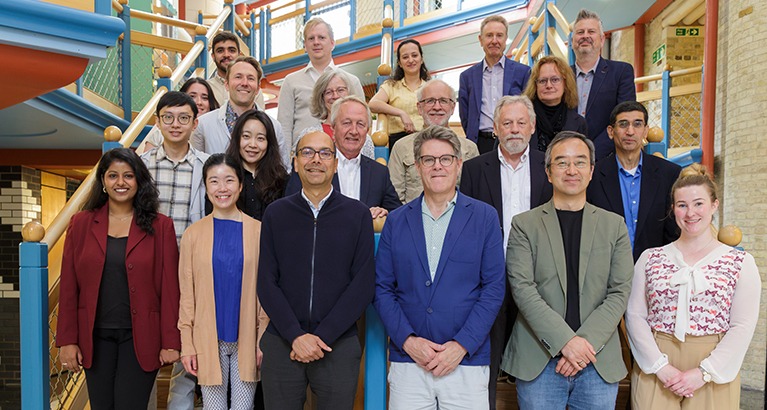The study details the process of cultivating serendipity, which it defines as “a surprising and valuable discovery originating from agentic responses to unplanned events”. Thus, rather than being merely an event that happens to an individual or organisation, serendipity requires ‘sagacity’ – it builds on the notion that positive discoveries are facilitated by controllable elements such as an open mind.
How serendipitous discoveries fall into 3 categories
The authors categorise the development of serendipity into 3 types:
1
Thunderbolt
Thunderbolt serendipity occurs when no active search for a solution is taking place, but a new problem-solution pairing emerges unexpectedly, like the invention of the rolling suitcase.
2
Archimedes
Archimedes serendipity involves seeking a solution to a known problem, but finding it unexpectedly from an unrelated source, as in the tale of Archimedes and his ‘Eureka’ (Greek for “I have found it”) moment.
3
Post-it note
Lastly, Post-it note serendipity happens when searching for a solution to one problem leads to the discovery of a solution to an unrecognised or entirely different problem, as when an inventor at company 3M stumbled upon Post-it notes while trying to create stronger glue.

Organisations can encourage behaviour leading to serendipity
The book chapter – entitled “Serendipity in entrepreneurship, strategy, and innovation: a review and conceptualisation” – is published as part of a broader book entitled Serendipity Science. The chapter is co-authored by Matthew Grimes, Professor of Entrepreneurship and Sustainable Futures at Cambridge Judge, and Christian Busch of the Marshall School of Business, University of Southern California. The chapter involves a review of academic literature about serendipity in entrepreneurship, and provides techniques that organisations could implement to encourage behaviour that leads to serendipitous moments.
Eight key findings about serendipity and innovation in the workplace
Below, Professor Matthew Grimes talks about some of the book chapter’s key findings.
1
We emphasise the ‘agency’ involved in serendipitous occurrences, as we don’t attribute it all to luck
We notice that each type of serendipity (thunderbolt, Archimedes and Post-it) is unified by the presence of some unexpected event or trigger. Prior studies have shown that conventional decision-making approaches are often shaped by cognitive and behavioural biases, which can obscure the importance of weak cues and thus constrain serendipity. This might be because events and information that are unexpected can go unnoticed or are discarded, or perhaps there is pressure to conform in a desire to appear rational.
2
Deviating from tried and true methods encourages greater displays of creativity
People who are deeply familiar with particular methods tend to overlook opportunities for innovation. New experiences and unusual situations, in other words, tend to enhance cognitive flexibility. The process of professionalisation has led to increased degrees of specialised expertise, but also ‘functional fixedness’ – the quality of being mentally blocked from using tools and approaches in novel ways.
3
Both extroverts and introverts can realise the benefits of serendipity
Research has shown that extroversion can increase fortunate encounters by increasing the number of diverse individual interactions as well as encouraging sustained engagement with these individuals. People feel more ‘attracted’ to extroverts and therefore feel more comfortable sharing novel information, thus potentially surfacing unexpected solutions. On the other hand, we notice that being aware of and paying attention to subtle details may also require self-awareness and inward focus, showing how serendipity may also arise from more introverted practises such as meditation and reading.
4
Our research found many serendipity triggers
These include:
- curiosity
- alertness (the desire to learn coupled with alertness help people notice unexpected moments)
- positive emotions (compassion can increase the capacity to make associations)
- self-awareness (linked to positive well-being and mental health, which in turn improves social interaction).
Other such triggers include:
- physical proximity
- humility (lack of dogmatism helps help increase openness)
- improvisation (boosting quick reactions to a situation)
- large networks (social embeddedness can lead to innovation communities)
5
Pixar and Google have got it right regarding working environments
Working environment really matters in increasing serendipity. Pixar and Google have organised their headquarters to maximise cross-pollination of data and people across different areas.
For example, the main buildings of Pixar – one of the highest-grossing film studios of all time – were designed to maximise inadvertent encounters. Instead of designing separate buildings for computer scientists, executives, and animators, the company developed a single big space with a big atrium as well as mailboxes, meetings rooms, and a coffeeshop at the centre. This led to people bumping into each other in the atrium. Other such techniques to pair people up to create these ’watercooler moments’ have been implemented, such as randomised coffee trials or learning lunches.
6
Approaching problems repeatedly and quickly in a variety of ways can lead to serendipity
This sort of approach allows ideas to be rapidly assessed for efficacy, while lowering costs focused on just one specific solution. This technique is especially useful for startup companies finding their way, because they can develop prototypes of new products and services – and view each iteration of such prototype as a necessary step in a broader process rather than a failure, thus allowing serendipitous approaches to emerge.
7
Serendipity often emerges through diversity and collaboration
Research has shown that ‘bisociation’ – the connection of previously unrelated events, skills, or information (such as linking a serendipity trigger to something relevant) – tends to be at the core of serendipity. Our research has shown that diversity often breeds serendipity, as the ability to form and then act upon bisociations depends on combining previously unrelated ideas or information.
There’s a caveat: such benefits of increased diversity and interactions can only be realised when organisations ensure a strong collective culture which emphasises mutual interests and shared experience. Just as with office layout enabling casual conversations to spark ideas, a friendly company culture means workers are less likely to censor their thoughts, leading to more creative innovations. Potential barriers to serendipity can thus be overcome by building diverse teams and including people early in the process.
8
What appears to be a spontaneous idea can sometimes be the result of previously forgotten insights
There can be a lag between the triggering event and the bisociation, which some refer to as the ‘incubation period’ – so we suggest persistence. Sometimes, the most seemingly commonplace moments – like browsing in a bookstore – can be that trigger that alerts people to something they were previously aware of and thus lead to that crucial ‘Eureka’ moment.
Featured research
Busch, C. and Grimes, M. (2023) “Serendipity in entrepreneurship, strategy, and innovation – a review and conceptualisation.” In: Copeland, S., Ross, W. and Sand, M. (eds.) Serendipity science: an emerging field and its methods. Cham: Springer International Publishing, pp.69-99





